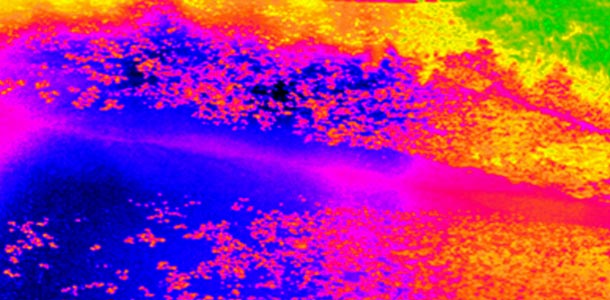
Cyanobacteria or Blue-Green Algae Research Can Save Lives
THUNDER BAY – Research at the Northern Ontario School of Medicine into cyanobacteria is helping to find ways to identify the lakes in the region, and beyond that may be impacted. Cyanobacteria, known commonly as blue-green algae, pose a significant health risk for Northern Ontarians. This is a real issue for those who draw on lakes for summer recreation or drinking water.
Exposure to cyanobacteria can cause vomiting, diarrhea, abdominal pain, difficulty breathing, dizziness, and numb limbs, among other symptoms. For these reasons, many waterways in Northern Ontario face closures due to the growth of blue-green algae blooms.
Northern Ontario School of Medicine (NOSM) researcher Dr. Joe Eibl, in collaboration with Gerry Dignard of Canadian Shield Consultants, are currently developing a new, faster method of screening lakes and waterways for blue-green algae blooms. Their research suggests that blue-green algae can be identified aerially, using photographic technology that can visualize pigments of the live bacteria.

Although the research is still in its validation stage, Eibl and Dignard have had great success in identifying blue-green algae blooms in Lake Nipissing in St. Charles, Ontario. This new screening method is faster than the current system of screening for blue-green algae, wherein samples are collected from approximately a dozen local lakes, analyzed in Toronto, then returned to Northern Ontario where the information is disseminated. In the current system, there is approximately a week between the time the water is tested, and the time the public is notified of a problem.

The project has been piloted with positive results. “We are able to detect the blue-green algae by repurposing technology which is used in the resource industry,” explains Dr. Joe Eibl, Northern Ontario School of Medicine Researcher and principal investigator in this project. “The chlorophyll in the blue-green algae is picked up by this photographic technology, allowing us to identify at-risk areas very quickly.”
In addition to providing community members with faster, more comprehensive information regarding blue-green algae bacteria in local lakes, Eibl and Dignard feel that this is the first step in ongoing research.
“The work still ahead of us is to come up with a technology or strategy to identify areas of concern at the early stage when the nutrients are starting to grow – before the algae really blooms,” explains Gerry Dignard, CEO of Canadian Shield Consultants. “Once we can identify potential areas of concern before they become a problem, then we can work towards solving the problem itself.”
Eibl and Dignard are currently in the process of narrowing the parameters to identify the ideal conditions for photographing lakes to provide reliable data. They plan to turn this into an off-the-shelf technology that can be used broadly across the North.












